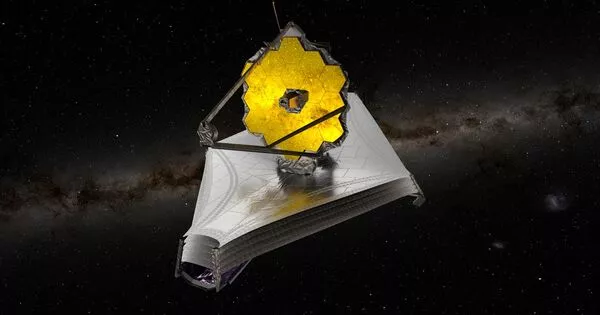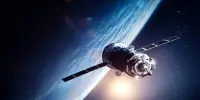NASA’s James Webb Space Telescope (JWST) has confirmed the discovery of its first exoplanet, called HD 100546 b, using the telescope’s coronagraph instrument. This exoplanet is a gas giant that orbits a young star in the constellation Centaurus. The discovery of HD 100546 b is a significant milestone for JWST, as it demonstrates the telescope’s ability to detect and study exoplanets. The telescope is set to launch in 2021, and it will be used to study a wide range of astronomical objects and phenomena, including exoplanets, star formation, and the early universe.
For the first time, researchers used NASA’s James Webb Space Telescope to confirm the existence of an exoplanet, a planet that orbits another star. The planet, officially known as LHS 475 b, is almost exactly the same size as our own, measuring 99% of Earth’s diameter. Kevin Stevenson and Jacob Lustig-Yaeger of the Johns Hopkins University Applied Physics Laboratory in Laurel, Maryland, lead the research team.
After carefully reviewing targets of interest from NASA’s Transiting Exoplanet Survey Satellite (TESS), which hinted at the planet’s existence, the team decided to observe it with Webb. With only two transit observations, Webb’s Near-Infrared Spectrograph (NIRSpec) captured the planet easily and clearly. “There is no question that the planet is there. Webb’s pristine data validate it,” said Lustig-Yaeger. “The fact that it is also a small, rocky planet is impressive for the observatory,” Stevenson added.
“These first observational results from an Earth-size, rocky planet open the door to many future possibilities for studying rocky planet atmospheres with Webb,” agreed Mark Clampin, Astrophysics Division director at NASA Headquarters in Washington. “Webb is bringing us closer and closer to a new understanding of Earth-like worlds outside our solar system, and the mission is only just getting started.”
Webb is bringing us closer and closer to a new understanding of Earth-like worlds outside our solar system, and the mission is only just getting started.
Mark Clampin
Among all operating telescopes, only Webb is capable of characterizing the atmospheres of Earth-sized exoplanets. The team attempted to assess what is in the planet’s atmosphere by analyzing its transmission spectrum. Although the data shows that this is an Earth-sized terrestrial planet, they do not yet know if it has an atmosphere. “The observatory’s data are beautiful,” said Erin May, also of the Johns Hopkins University Applied Physics Laboratory. “The telescope is so sensitive that it can easily detect a range of molecules, but we can’t yet make any definitive conclusions about the planet’s atmosphere.”
Although the team can’t conclude what is present, they can definitely say what is not present. “There are some terrestrial-type atmospheres that we can rule out,” explained Lustig-Yaeger. “It can’t have a thick methane-dominated atmosphere, similar to that of Saturn’s moon Titan.”

The team also notes that, while it is possible that the planet has no atmosphere, some atmospheric compositions, such as a pure carbon dioxide atmosphere, have not been ruled out. “A 100% carbon dioxide atmosphere is so much more compact that it becomes very difficult to detect,” Lustig-Yaeger said. Even more precise measurements are needed for the team to distinguish between a pure carbon dioxide atmosphere and no atmosphere at all. The researchers plan to collect additional spectra with upcoming observations this summer.
Webb also revealed that the planet is a few hundred degrees warmer than Earth, so if clouds are detected, it may lead the researchers to conclude that the planet is more like Venus, which has a carbon dioxide atmosphere and is perpetually shrouded in thick clouds. “We’re at the forefront of studying small, rocky exoplanets,” Lustig-Yaeger said. “We have barely begun scratching the surface of what their atmospheres might be like.”
The researchers also confirmed that the planet completes an orbit in just two days, which was revealed almost instantly by Webb’s precise light curve. Although LHS 475 b is the closest planet to its star, its red dwarf star is less than half the temperature of the Sun, so the researchers believe it could still have an atmosphere.
The findings of the researchers have opened up the possibility of locating Earth-sized planets orbiting smaller red dwarf stars. “This confirmation of a rocky planet highlights the precision of the mission’s instruments,” Stevenson said. “And this is only the beginning of many discoveries.” Lustig-Yaeger concurred. “The new frontier with this telescope is rocky exoplanets.”















